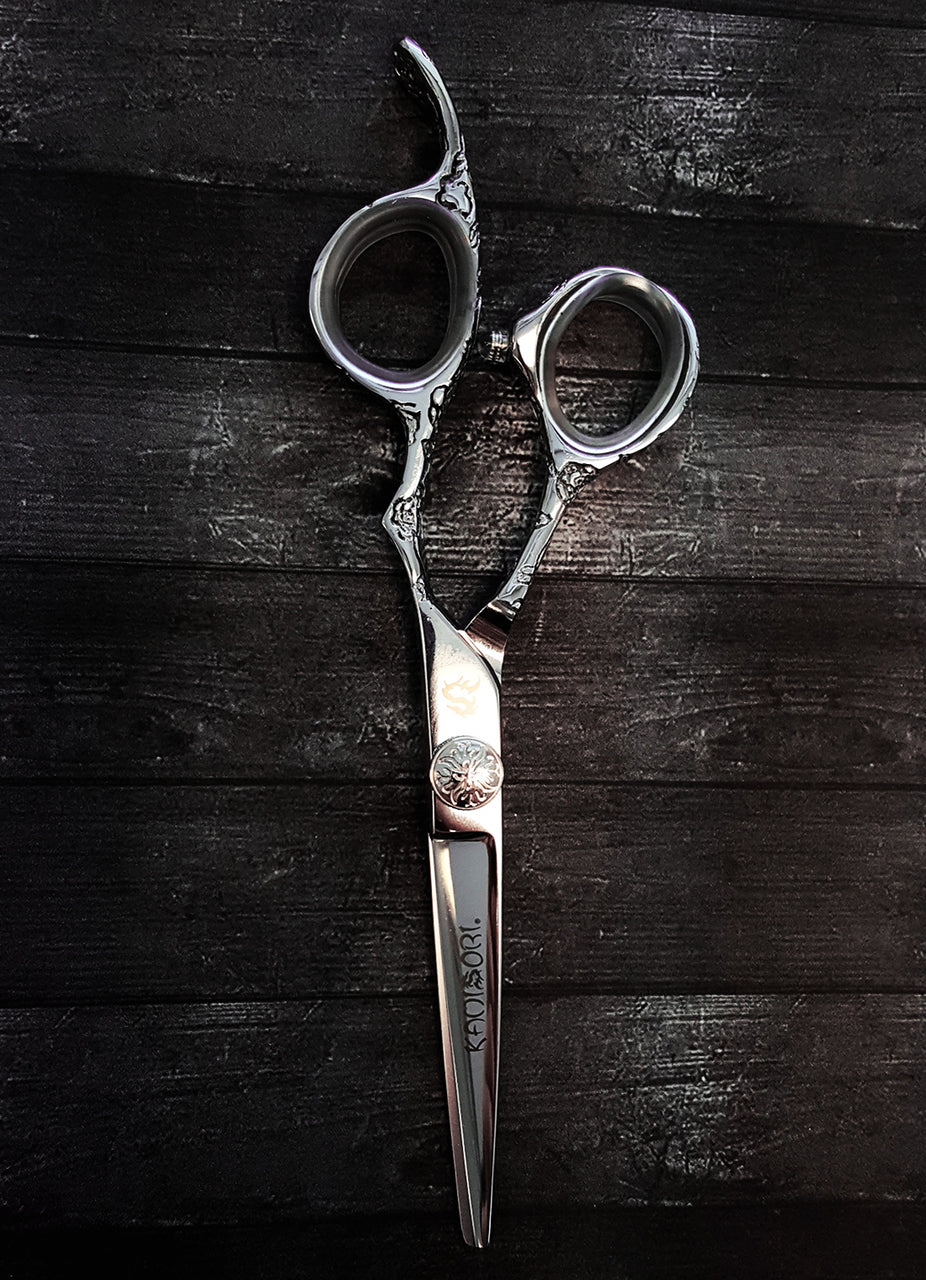In the realm of hair artistry, the tools of the trade can often feel like a magician’s wand—a mere flick of the wrist can transform a hairstyle from drab to fab. But what powers these magical transformations? Have you ever pondered upon the intricacies of professional haircutting shears? What exactly goes into their composition? You might be surprised to learn that the science behind these essential tools is both fascinating and complex.
When considering professional haircutting shears, one must start with the material composition. Most commonly, shears are crafted from high-quality stainless steel. But not all stainless steel is created equal. Tools made from high-carbon stainless steel are often favored by professionals. The high carbon content enhances durability and allows for sharper blades, crucial for precision cutting. These shears possess an inherent ability to retain their edge longer than their lower-carbon counterparts. However, there’s a trade-off; they may require more meticulous maintenance to avoid rust and corrosion. Herein lies a challenge: do you put in the extra effort for longevity, or do you choose convenience?
Another material that has gained traction in recent years is cobalt alloy. This metal offers a higher level of hardness, making it desirable for shears designed to withstand intense daily use. Cobalt shears promise exceptional edge retention and are lighter than traditional stainless steel options. However, this superior quality often comes at a steeper price point. When facing the choice between cobalt and high-carbon stainless steel, one must weigh both performance and budget. After all, is it really worth it to spend more for a pair of shears that last longer?
On the flip side, titanium-coated shears have appeared on the market as a colorful and appealing alternative. While they may lack the robust strength of cobalt or high-carbon steel, their titanium coating provides an added layer of protection against corrosion and wear. They’re also generally lighter, which can make a substantial difference during long salon sessions. However, stylists must be cautious, as the coating can chip over time, imperiling the shears’ performance. This begs the question: are looks more important than endurance when selecting tools for your artistry?
Not merely an amalgamation of metals, the design of professional haircutting shears plays a significant role in their functionality. Ergonomics, that blesséd marriage of comfort and utility, cannot be overlooked. Shears are often designed not just for cutting, but also for how they feel in the stylist’s hand. Many models boast offset handles or adjustable finger rings to reduce strain and enhance grip. Such thoughtful design features are essential because a well-designed shear can actually improve technique and reduce fatigue. Yet, how do you discern which ergonomic features truly benefit your style? This is often a game of trial and error, as every stylist has unique preferences.
Beyond materials and design, let’s delve into the art of blade sharpening. The sharpness of a shear’s blade is of utmost importance. Blades that are honed to a razor-like edge not only facilitate cleaner cuts but also enhance the stylist’s ability to shape and sculpt hair. Regular maintenance, including professional sharpening, is vital. The process, however, can be intricate; achieving that perfect edge requires expertise. A poorly sharpened shear can result in drag on the hair, causing frizz and split ends—certainly not the outcome any stylist desires. The challenge, then, lies in balancing convenience with quality maintenance. Are you ready to commit to regular sharpening, or are you tempted by the allure of disposable tools?
Let’s not forget about the balance and weight distribution of the shears. A shear that feels out of balance can lead to awkward cuts and muscle strain. Ideally, professionals should aim for shears that feel comfortable while manipulating and moving through various cutting techniques. As a stylist, you may find yourself asking: “How do I know when I’ve found the perfect pair?” Testing them out, coupled with advice from seasoned professionals can offer insights that theory alone cannot. How often do you switch your tools, and what informs those choices?
Last but certainly not least, the shears’ longevity and warranty should inform your purchasing decisions. A good quality shear can last for years, some even decades, when well cared for. Reputable brands often provide warranties, which can be a reassuring factor for those investing in high-end tools. Carefully reviewing warranty policies ensures that you can confidently choose a pair of shears tailored to your style without fear of premature failure. But, is it tricky to find a manufacturer that not only offers quality but stands behind their products?
In summation, the world of professional haircutting shears is rich with choice and fraught with decisions. The materials—high-carbon stainless steel, cobalt alloy, and titanium—each present a unique set of benefits and challenges. The design reflects an understanding of the artist’s need for comfort and precision; the maintenance rituals ensure longevity and performance. Now, armed with this knowledge, are you more informed about the intricate composition of your shears? And, perhaps more critically, which tool will you choose to elevate your artistry in the salon? The journey into the science of shears invites both wonder and responsibility—embrace it with curiosity and passion!
